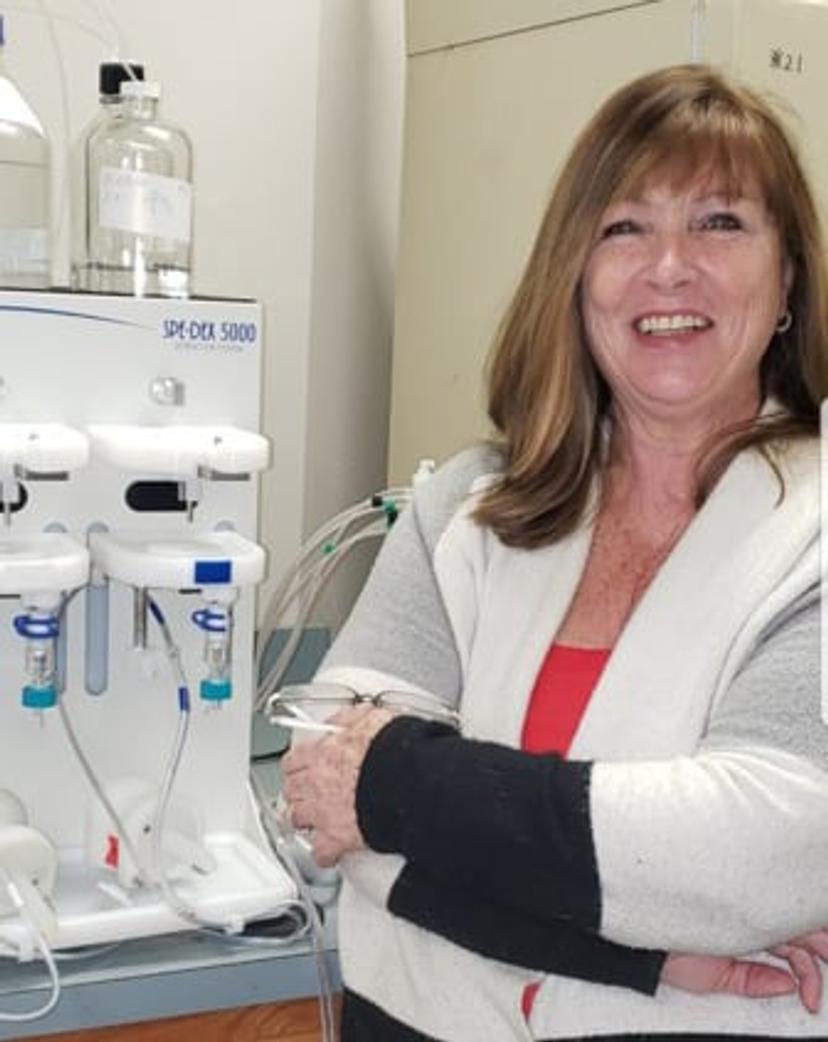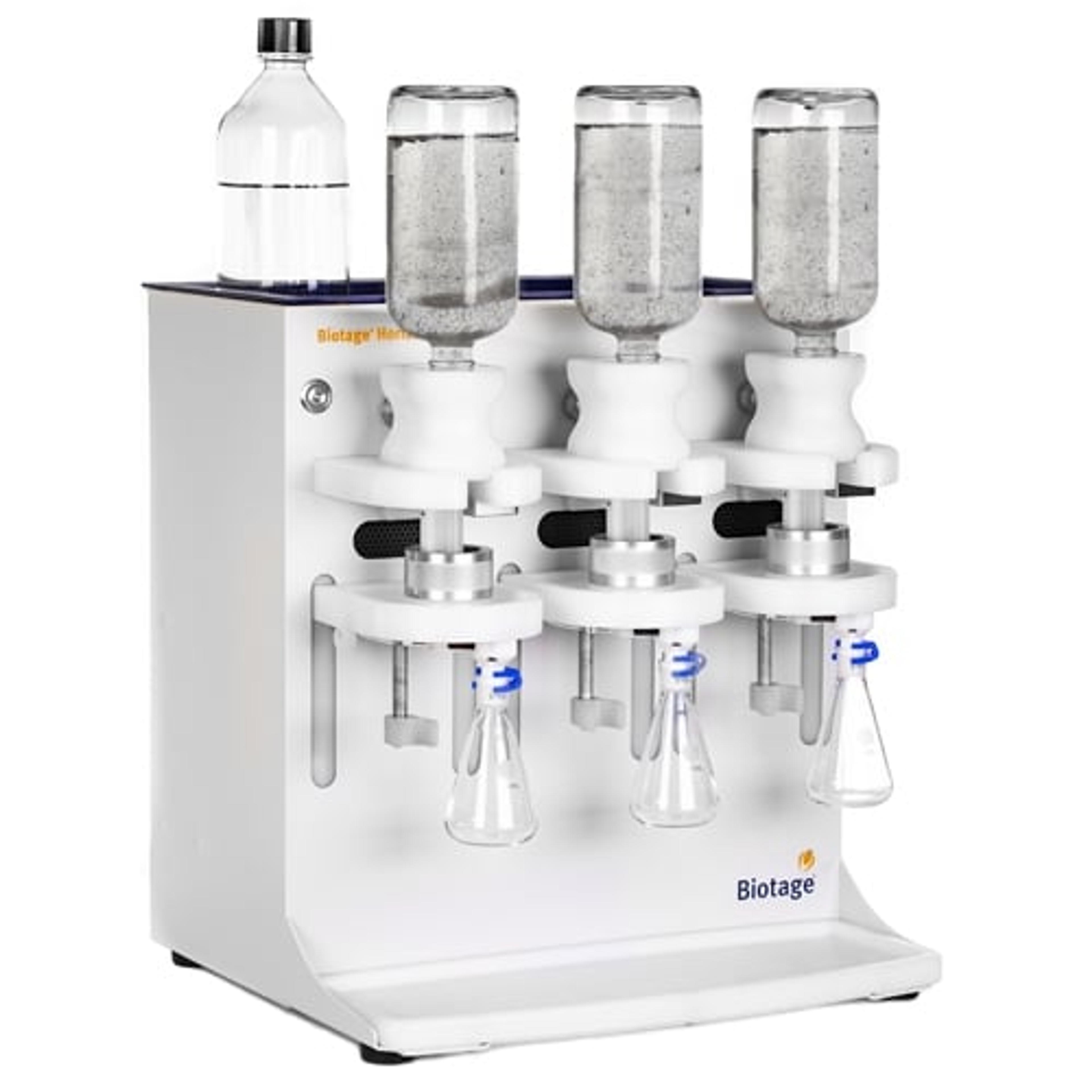How environmental labs can save time and boost productivity with automated solid-phase extraction
Explore the benefits of adopting automated SPE for high-throughput environmental testing
22 Jan 2020

Replacing the older liquid-liquid extraction techniques using solid-phase extraction (SPE) to separate semi-volatile and non-volatile compounds from liquid matrices has served a variety of industries, especially environmental labs. SPE, known for its lower solvent usage, higher user safety and automation capabilities, provides busy analytical testing labs with reliable and productive workflows.
Given that regulatory programs in Europe and the U.S. have included SPE as a part of their methods, an increasing number of labs have adopted and optimized SPE for routine analysis. In this SelectScience interview with Marie Gemmill, manager of organics at Adirondack Environmental Services, a full-service environmental laboratory based in Albany, New York, we explore the benefits of using automated SPE.
“We analyze a variety of matrices including water, soil, air and liquid waste samples. I oversee and manage our workflows,” says Gemmill. Here at Adirondack Environmental, we analyze a wide range of parameters, both organic and inorganic including polychlorinated biphenyls (PCBs), pesticides, asbestos, trace metals and a whole range of organic volatile and semi-volatile compounds for many different industries.
“We purchased our first set of SPEs in 2005 (from Horizon Technology, now part of Biotage). It was a no-brainer purchase for us because we wanted to reduce labor and solvent costs “ says Gemmill. “SPE used much less solvent than a typical separatory funnel extraction.” Initially, the units were exclusively used for oil and grease analyses, but we quickly saw the advantages and were able to adapt the SPEs for other organic analyses.
Reducing waste disposal
As well as reduced solvent usage, the SPEs resulted in a substantial reduction in waste disposal, an objective that’s important to the company. Gemmill continues: “Typically, a full EPA 625 extraction would yield 360ml of methylene chloride that would need to be concentrated down to a final volume of one ml. The SPE extraction process, in contrast, uses about 100ml of solvent, which in turn requires less time to concentrate, saving analyst time.
For high-throughput laboratories such as Adirondack Environmental Services, SPEs are simpler to learn and make workflows quicker and easier, giving faster results. “It’s a great time saver. The SPE is quicker and requires less analyst time,” says Gemmill.
Benefits of automation
Recently, the team at Adirondack Environmental Services expanded the lab capacity by adding two Biotage® Horizon 5000 automated extraction instruments for additional SPEs to detect herbicides, pesticides, PCBs and more. “Our overall goal is to eliminate all laborious separatory funnel extractions. This will save us labor, time and solvent, ultimately saving on the bottom line and providing higher throughput for our clients,” notes Gemmill.
An additional benefit of an automated extraction system in a higher throughput service lab is the minimal user intervention to process samples. “The nice thing about the Horizon 5000 is that it is nearly fully automatic depending on the type of extraction method. You put the bottles on, and you can walk away, coming back when needed,” explains Gemmill. It's pretty hands-free.”
Automated SPE also ensures precision between different users. “The programming is intuitive, so training is uncomplicated,” says Gemmill. The two Horizon 5000 are capable of processing up to six samples at once, accelerating lab productivity.
Being a part of the company since 1988, Gemmill brings invaluable experience to the organics department. When the team decided to purchase an additional SPE they explored several different options from various vendors. Gemmill prioritized reliable customer support. The Biotage team efficiently and competently demonstrated real-time usage of the Horizon 5000 extractor, Gemmill recalls, meaning “we were able to make a big purchase with confidence.”
Our overall goal is to eliminate all laborious separatory funnel extractions.
Marie Gemmill Adirondack Environmental Services
After making the investment, the team received continued support on the intended applications. “The service has been excellent. The technicians are very knowledgeable and helpful," says Gemmill. “If we mention one compound, they'll know what the issue is without having to explain it.”
Future plans
A trend that Gemmill sees in the near future for environmental analysis is the ability to reach lower and lower detection limits. The sample preparation step is critical in achieving these goals. In more recent times, testing for 1,4-dioxane, an emerging contaminant classified by the US Environmental Protection Agency as “likely to be carcinogenic to all humans” has gained importance in environmental labs. “We are currently examining a preparation analysis on the Horizon 5000 that will allow us to detect 1,4-dioxane in the ppt range of concentration,” says Gemmill.


